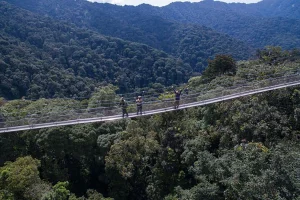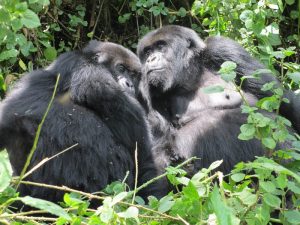Bird Watching in Kakamega Forest
Overview
Bird Watching in Kakamega Forest. Kakamega Forest, located in western Kenya, is a breathtaking rainforest and a paradise for bird watchers. This unique ecosystem is one of the last remnants of the ancient equatorial forests that once covered East Africa. With over 400 bird species recorded, Kakamega Forest is a top destination for birding enthusiasts seeking to explore its diverse avifauna. In this blog post, we will delve into what makes Kakamega Forest a prime location for bird watching, the best times to visit, and tips for making the most of your birding experience.
The Significance of Kakamega Forest
A Biodiversity Hotspot
Kakamega Forest spans approximately 240 square kilometers (93 square miles) and is rich in biodiversity. It serves as a critical habitat for many bird species, as well as a variety of mammals, reptiles, and plants. The forest’s unique environment is influenced by its location at the convergence of the East African and West African floral regions.
Important Bird Areas
Recognized as an Important Bird Area (IBA) by BirdLife International, Kakamega Forest provides refuge for several species that are not found anywhere else in Kenya. The forest is particularly notable for its populations of forest-specialist birds, making it a must-visit for serious bird watchers.
Bird Species to Look Out For
Rare and Endemic Birds
Kakamega Forest is home to several rare and endemic bird species, including:
- Great Blue Turaco: This striking bird is known for its vibrant blue plumage and distinctive call. It is often spotted flitting through the treetops.
- African Green Pigeon: A beautiful bird with a vibrant green body, the African green pigeon can be seen feeding on fruits in the forest canopy.
- Honeyguides: Look out for various species of honeyguides, known for their unique behavior of guiding humans to bee nests.
Other Notable Species
In addition to the rare birds, Kakamega Forest is home to a wide variety of other bird species, including:
- Crested Guineafowl
- Black-and-white-casqued Hornbill
- Blue-headed Coucal
- Red-headed Malimbe
- Yellow-billed Shrike
The diverse habitats within the forest—ranging from dense undergrowth to tall trees—offer various opportunities to spot a multitude of bird species.
Best Times for Bird Watching
The best time for bird watching in Kakamega Forest is during the dry seasons from June to September and December to February. During these months, the weather is typically mild, and birds are more active. Migratory birds can also be spotted during these periods, adding to the variety of species available for observation.
Bird Watching Activities
Guided Birding Tours
To enhance your bird watching experience, consider joining a guided birding tour. Experienced local guides are familiar with the forest and can help you locate specific species. They can also provide valuable insights into the behavior and habitat of the birds.
Self-Guided Exploration
If you prefer a more independent experience, Kakamega Forest has well-marked trails that allow for self-guided exploration. Pack your binoculars, a field guide, and some snacks, and spend the day wandering through the forest. Early mornings and late afternoons are ideal times for bird activity.
Birding Photography
For photography enthusiasts, Kakamega Forest offers numerous opportunities to capture stunning images of birds in their natural habitats. Bring a good camera with a zoom lens to photograph the birds up close. Patience and quiet observation will yield the best results.
Tips for a Successful Birding Experience
- Bring the Right Gear: Equip yourself with binoculars, a camera, a field guide, and comfortable clothing suitable for walking in the forest.
- Be Quiet and Patient: Birds are easily startled by noise. Move slowly and quietly to increase your chances of spotting them.
- Stay Hydrated: Carry enough water to stay hydrated during your exploration, especially if you plan to hike through the forest.
- Look Up and Down: Birds can be found at various heights, so keep an eye on the treetops and the forest floor.
- Respect Nature: Always follow park rules and guidelines to protect the fragile ecosystem of Kakamega Forest.
Accommodation Options
There are several accommodation options available near Kakamega Forest, catering to various budgets:
- Kakamega Forest Lodge: A comfortable lodge located near the forest entrance, offering cozy rooms and excellent dining options.
- Rondo Retreat: A tranquil retreat set within the forest, providing a peaceful atmosphere for relaxation.
- Budget Guesthouses: Various guesthouses and campsites are available for those looking for more affordable options.
Conclusion
Bird watching in Kakamega Forest is a rewarding experience filled with the thrill of discovery and the beauty of nature. With its rich biodiversity, rare species, and stunning landscapes, the forest provides an ideal setting for both novice and experienced bird watchers. Whether you choose to explore independently or with a guide, Kakamega Forest promises a memorable adventure in the heart of Kenya’s natural heritage. So grab your binoculars, immerse yourself in the sights and sounds of this enchanting forest, and uncover the avian wonders it has to offer!




